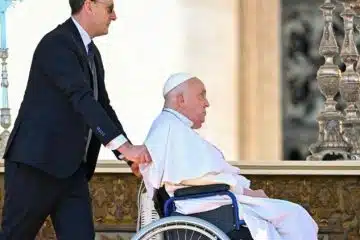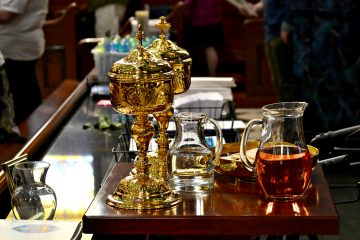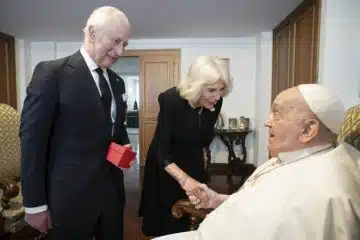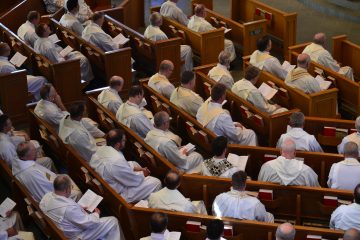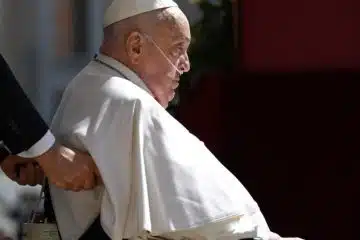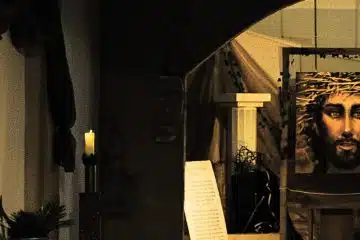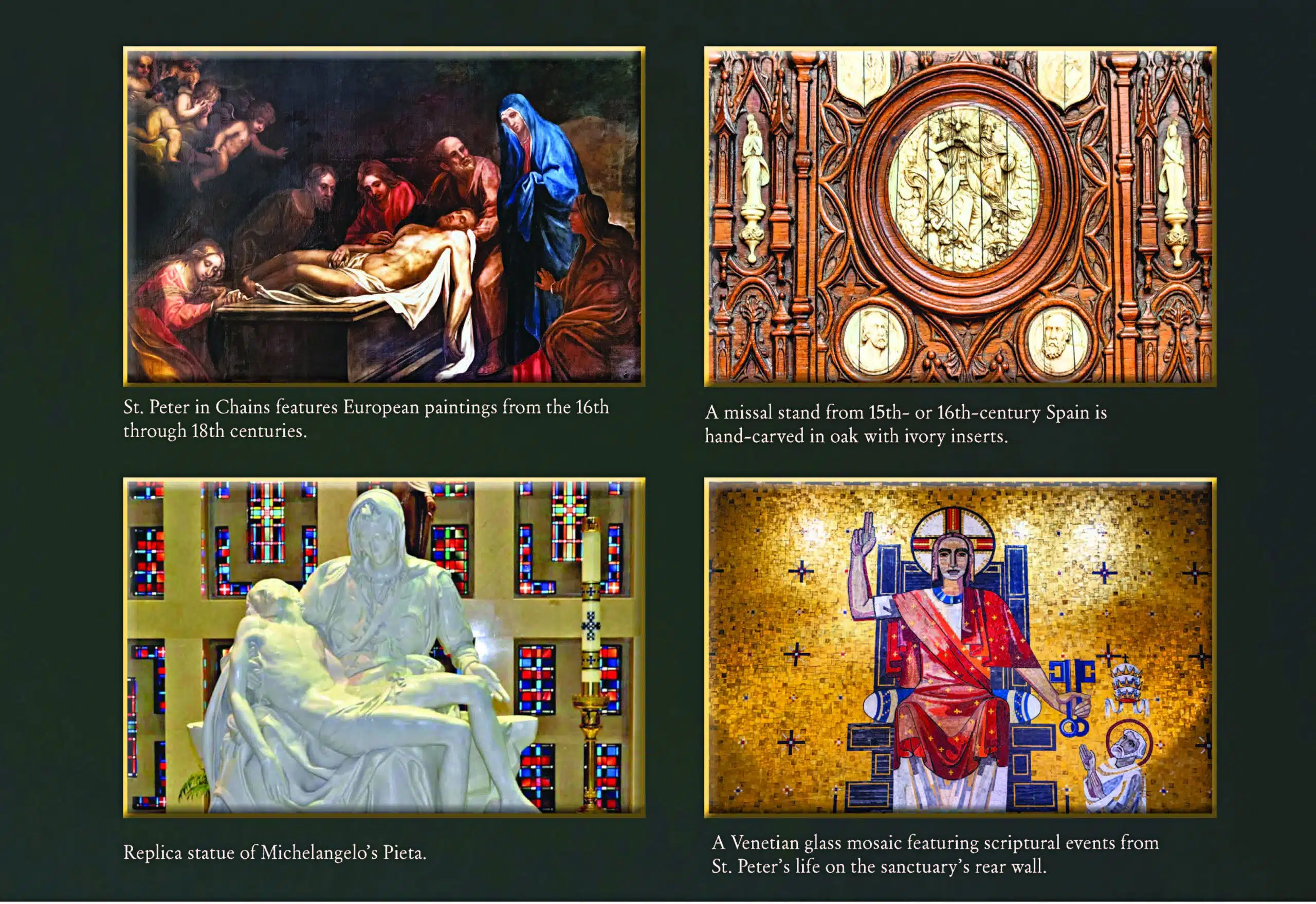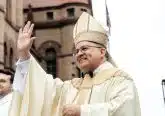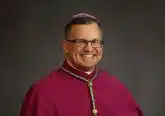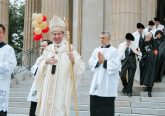Art at the Cathedral
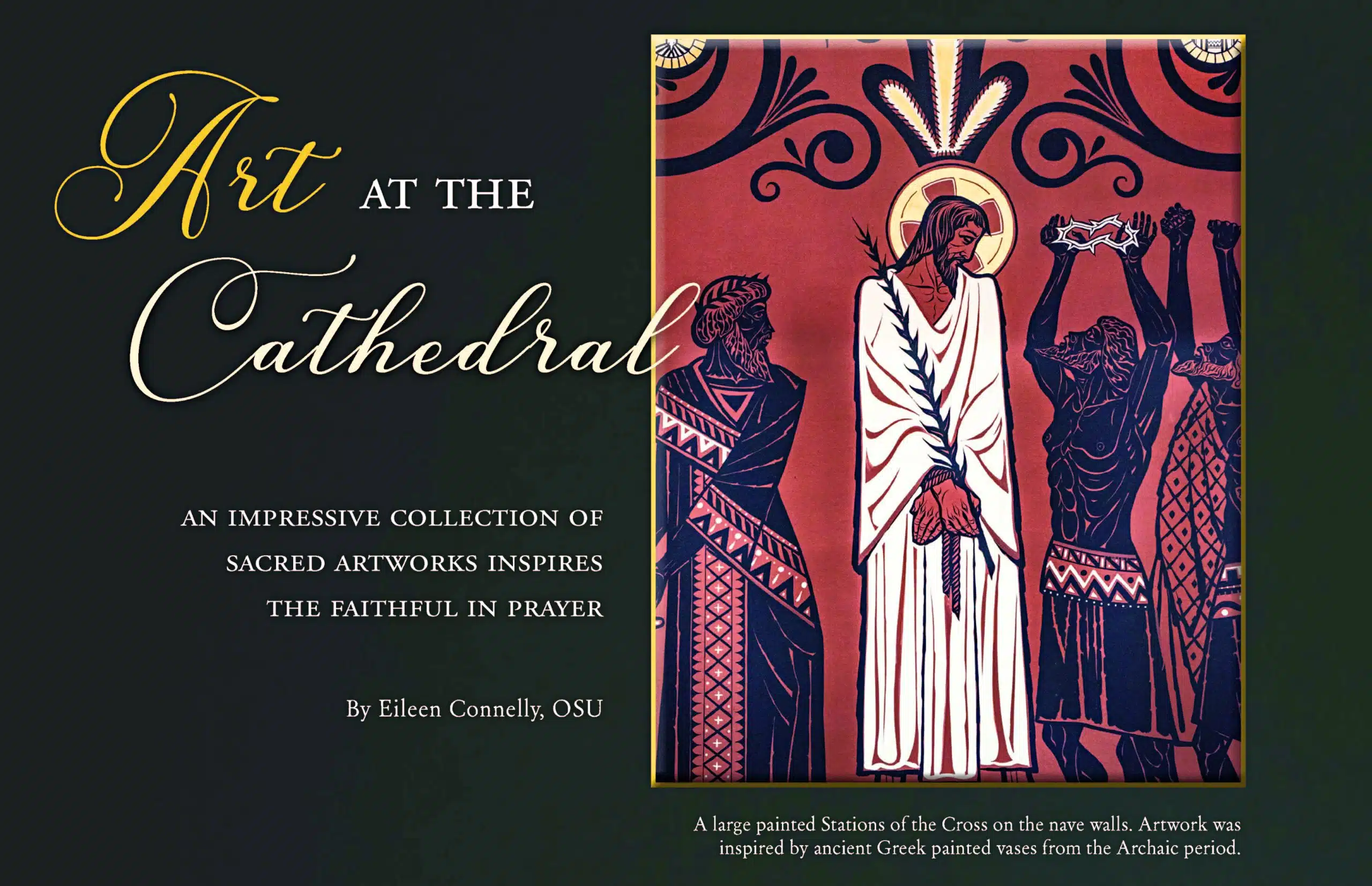
With its striking single spire that towers over downtown Cincinnati, the Cathedral Basilica of St. Peter in Chains stands as a testament to
the faith of local Catholics, both past and present, and is truly an architectural treasure.
Its exterior and grounds feature compelling images before one even enters. A bronze statue of the cathedral basilica’s patron, sculpted by Robert Koepnick, stands above the north entrance, and a stone plaque set high on the building’s north rear corner wall bears a ship’s image, representing the Church—storm-tossed, yet preserved by the Lord. Especially moving is the life-sized statue of Christ, titled “When I was Naked.” Designed by Timothy P. Schmalz, it portrays Christ as a homeless man, naked and clinging to a piece of cardboard; an identical copy stands outside the Basilica of St. Peter in Chains in Rome.
Inside the magnificent structure, there is an impressive collection of sacred artworks created to inspire the faithful in their prayer, reflection and worship as they enter into the celebration of Mass and deepen their relationship with God. A Venetian glass mosaic dominates the cathedral basilica’s interior, filling the sanctuary’s rear wall. At 35 feet high and approximately 40 feet wide, it is the largest such work in the United States. Featuring several scriptural events from St. Peter’s life, it was designed from Archbishop Karl J. Alter’s ideas and developed by Anton Wendling, who was both a professor at the University of Aachen, Germany, and an associate artist of the T.C. Esser Stained Glass and Mosaic Studios in Milwaukee.
Numerous revered treasures grace St. Peter in Chains’ interior, including the large painted Stations of the Cross that dominate the nave walls. Their artwork was inspired by ancient Greek painted vases from the Archaic period, which featured decorative designs in black varnish highlighted with white or gold against deep black clay. Within each panel rises the Tree of Life, the symbol of Christ the Vine, from whom all life flows into the Mystical Body.
Particularly unique is a processional cross bearing a corpus by renowned goldsmith Benvenuto Cellini (1500-1571); only a few of his works are found in the United States. The 131-inch high, gilt bronze figure was originally located in the private chapel of the Palazzo Guadagni in Florence, Italy, purchased at auction by the Cincinnati Art Museum, then acquired with contributions collected primarily by the Cincinnati Post and given to the cathedral in 1957.
The missal stand from 15th or 16th-century Spain is another remarkable item. Hand-carved in oak with ivory inserts, it bears a coat of arms that identifies it as the property of Cardinal Ximenes de Cisneros, a private chaplain to Queen Isabella of Spain who persuaded her to sponsor Columbus’ expedition.
No visit to the cathedral basilica is complete without reflecting on the replica statue of Michelangelo’s Pieta, provided by generous benefactors and friends and blessed on Dec. 8, 2018, the Solemnity of the Immaculate Conception, by Archbishop Dennis M. Schnurr. Thousands of parishioners, tourists and pilgrims have since visited this beautiful sculpture that depicts the greatest gift the Lord has given the faithful: His Son. It is located in the baptistery, across the main aisle from the Blessed Sacrament Chapel.
St. Peter in Chains also features a number of European paintings from the 16th through 18th centuries, gifted to the Archdiocese of Cincinnati’s early bishops during their travels to garner support for the newly established diocese. Among them are the “Madonna of the Milk” by 17th- century artist Peter Paul Rubens, brought to the cathedral by Archbishop William Henry Elder in 1880, and the “Annunciation” from the 16th century School of Titian, gifted by Cardinal Joseph Fesch, Archbishop of Lyon, to Bishop Edward D. Fenwick, OP, in 1823.
There are many more treasures to be discovered at St. Peter in Chains. Public viewing is available Monday through Friday from 6:30 a.m. to 6 p.m., Saturday from 11 a.m. to 6 p.m. and Sunday from 10:30 a.m. to 1 p.m. Free guided public tours are offered on the second Sunday of each month immediately after 10 a.m. Mass. Private group tours are arranged during the week, and self-guided tours are available on the cathedral basilica’s website. For more information, visit cathedralaoc.org.


